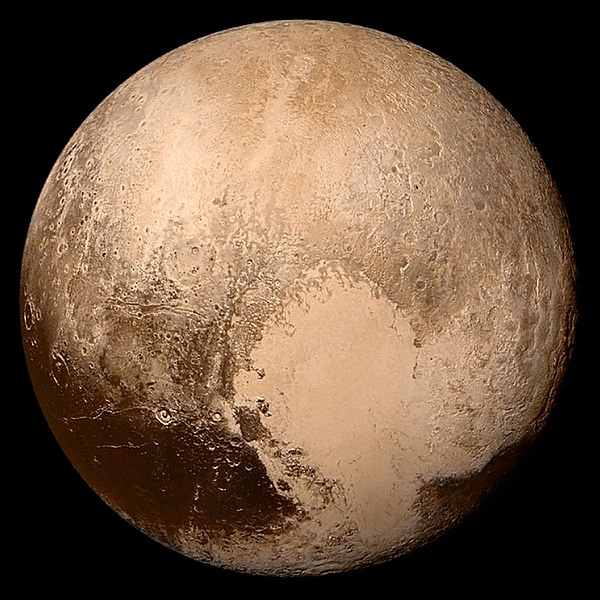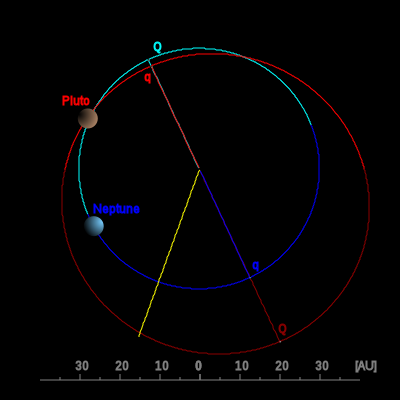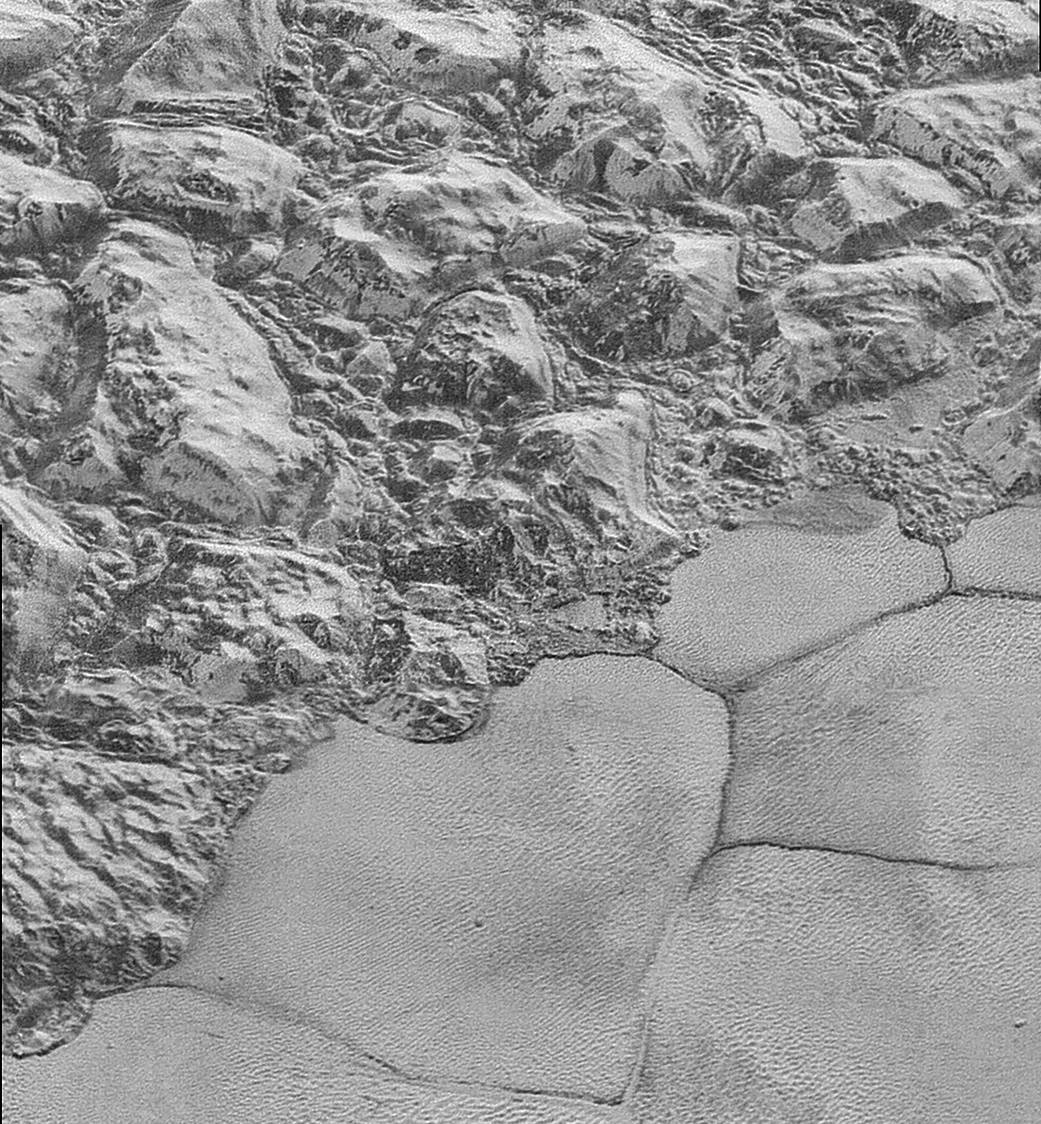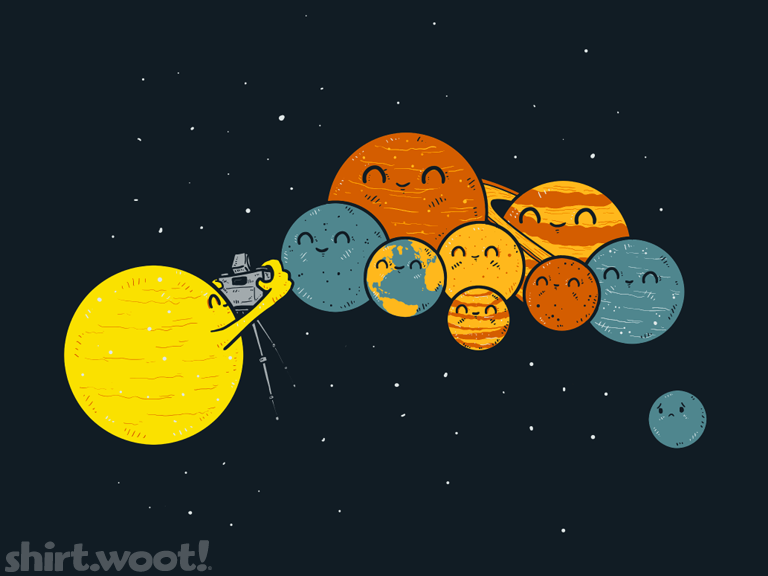By Ralph Phillips, Docent at HMNS Sugar Land, introduction by Chris Wells

Four images from New Horizons’ Long Range Reconnaissance Imager (LORRI) were combined with color data from the Ralph instrument to create this global view of Pluto. Author: NASAJohns Hopkins University Applied Physics LaboratorySouthwest Research Institute. Source: Wikimedia Commons.
A few years ago everyone’s heart went out to our littlest neighbor when Pluto was reclassified as a dwarf planet. This sentimental feeling was interesting because it revealed a burgeoning sense of extraterrestrial community among us earthlings. Instead of only identifying ourselves as citizens of a city, state or nation, we all seem to have developed a sense of belonging to something bigger. We were actually concerned with interplanetary relationships! I found this quite encouraging. Perhaps in an age when space crafts are mapping more and more of the Universe, we’re coming to realize that in all the vast emptiness of space, Earth and all it’s problems don’t seem to amount to much. For me the arguments about Pluto were an unexpectedly positive turn of events
But anyway, now that we’ve established our membership in this interplanetary community, it’s time to start gossiping about the neighbors! So what is the deal with Pluto? It turns out that Pluto is not only the smallest member of our Solar System (unless you count meteors), it’s also the shadiest. There are a lot of things about Pluto that scientists don’t understand and New Horizon’s flyby in 2015 has only added to the list of mysteries. Here are 5 of the most interesting mysteries:
WHY IS PLUTO’S ORBIT SO OUT OF ROUND AND TILTED?

Orbits of Pluto (red) and Neptune (blue); polar view. Plotted by a program written by Eurocommuter. Source: Wikimedia Commons.
- All the major planets of our system have orbits that are mostly round and mostly lined up within 7 degrees of the equator of the sun.
- Pluto is different…..its orbit is so out of round it actually gets inside the orbit of Neptune. Its orbit is inclined by 17 degrees
- This odd orbit is very different than the other planets but similar to Kuiper Belt objects, small bodies that orbit far from the sun and form a thick belt around the solar system (think comets and giant icebergs). Maybe Pluto’s strange orbit is because the dwarf planet is just a large, close Kuiper Belt object (like a comet), maybe its orbit was disturbed by the gravity of the giant planets (the math does not really match this idea) or maybe some other reason ?????
WHAT IS HAPPENING TO PLUTO’S ATMOSPHERE?
- Our big telescopes on Earth have hinted that the atmosphere of Pluto was getting a lot thicker as it got closer to the sun. The other planets don’t do that ….Why does Pluto?? New Horizon space craft showed the surface to be covered in frozen nitrogen and the atmosphere to be mainly nitrogen. Because Pluto gets 40% closer to the sun at Perihelion (the closest point it ever gets to the sun during the course of its orbit) versus Aphelion (the farthest part of its orbit), the temperature changes a lot. At Perihelion some of the nitrogen on the surface evaporates directly from solid to gas and makes the atmosphere more dense … but some of it escapes out into space. At aphelion, most of the atmosphere freezes
- How much does it change, how long can this go on and what other strange effects does it have on the planet’s surface?
HOW WERE THE “DUNES” OF PLUTO CREATED?
- The New Horizons space craft took some remarkable photos as it passed by Pluto. As scientists study them they are finding some unexpected terrain. They certainly did not expect to find things that look like sand dunes or snow drifts!
- Dunes and drifts are formed by wind, but Pluto’s atmosphere is so thin it cannot lift and carry any type of particle.
- One theory is that as large formations of methane ice sublime ( tunes directly into gas, skipping the liquid faze) into the atmosphere, some of the gas re-freezes in the air and is carried by the gentle winds that can exist. Those dusty ice particles then collect into dune shapes
- But we really do not know for sure.
IS PLUTO A PLANET, ICE DWARF OR HUGE COMET?
- We don’t really know for sure!!
- First of all, it depends on how you define “planet”. Pluto is round, orbits the sun (not another planet), and has mostly cleared its orbit of other debris. The most recent official definition of planet excludes Pluto because it has such a strange orbit and has not COMPLETELY cleared its orbit of other objects.
- If you call Pluto a planet, then you need to also include several recently discovered objects that orbit beyond Pluto.
- Based on measurements taken by the New Horizons space craft, Pluto’s composition is closer to a comet than any of the other planets or their moons. It has a lot of water ice and lots of frozen nitrogen.
- Based on its weird composition and strange orbit, I think Ice Dwarf fits the best.
WHY DOES ANYONE CARE WHETHER WE CALL PLUTO A PLANET OR SOMETHING ELSE??
- I see two main reasons for people to care:
- 1)People, especially Scientists, like to group things together based on similar characteristics. So we have to know what something is before we give it a “correct” group name. Pluto is like the other planets in some ways, but really different in other ways, so that makes some scientists nervous.
- 2)A lot of people living today know that Pluto used to be called a planet but got knocked down to ice dwarf or dwarf planet when a committee decided to change the definition of “planet”…… Most of us like to cheer for the “underdog”, even when it is a giant ball of ice we can barely see.
Answers to most of these questions will require another mission to Pluto with an orbiter and lander. It took several years to design, build and test the New Horizons spacecraft, then 9.5 years of space flight to get to Pluto. So, it will be several years before we visit that ice world again.
If you are interested in learning more about Pluto and all the other inhabitants of our Solar System, come to HMNS Sugar Land on July 29th for
Space Out Day. Ralph Phillips will be there to present on a variety of topics.








